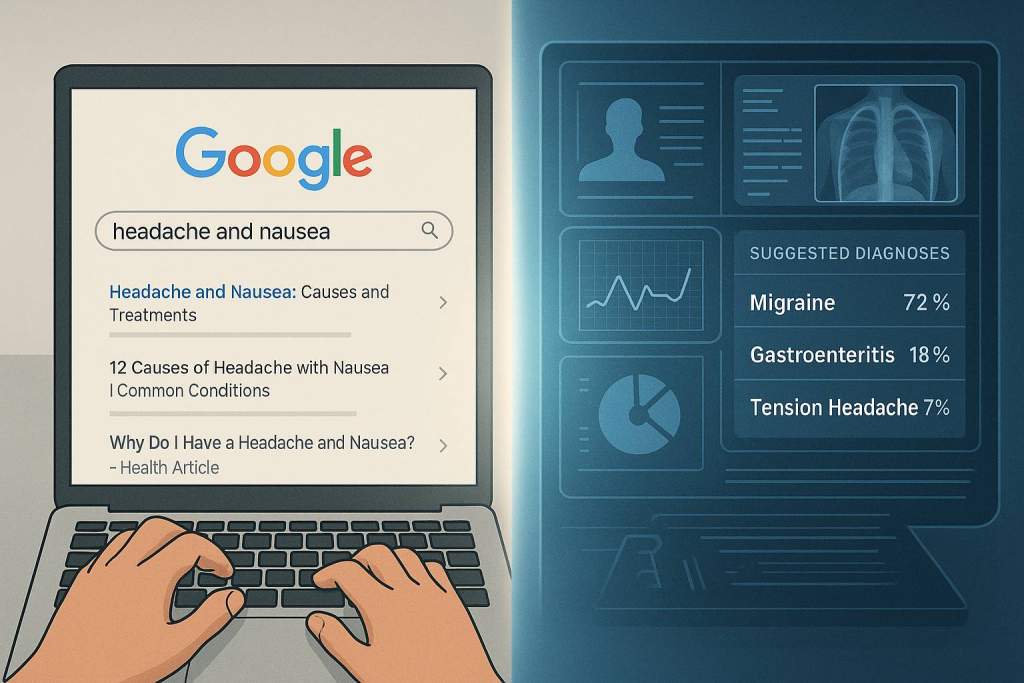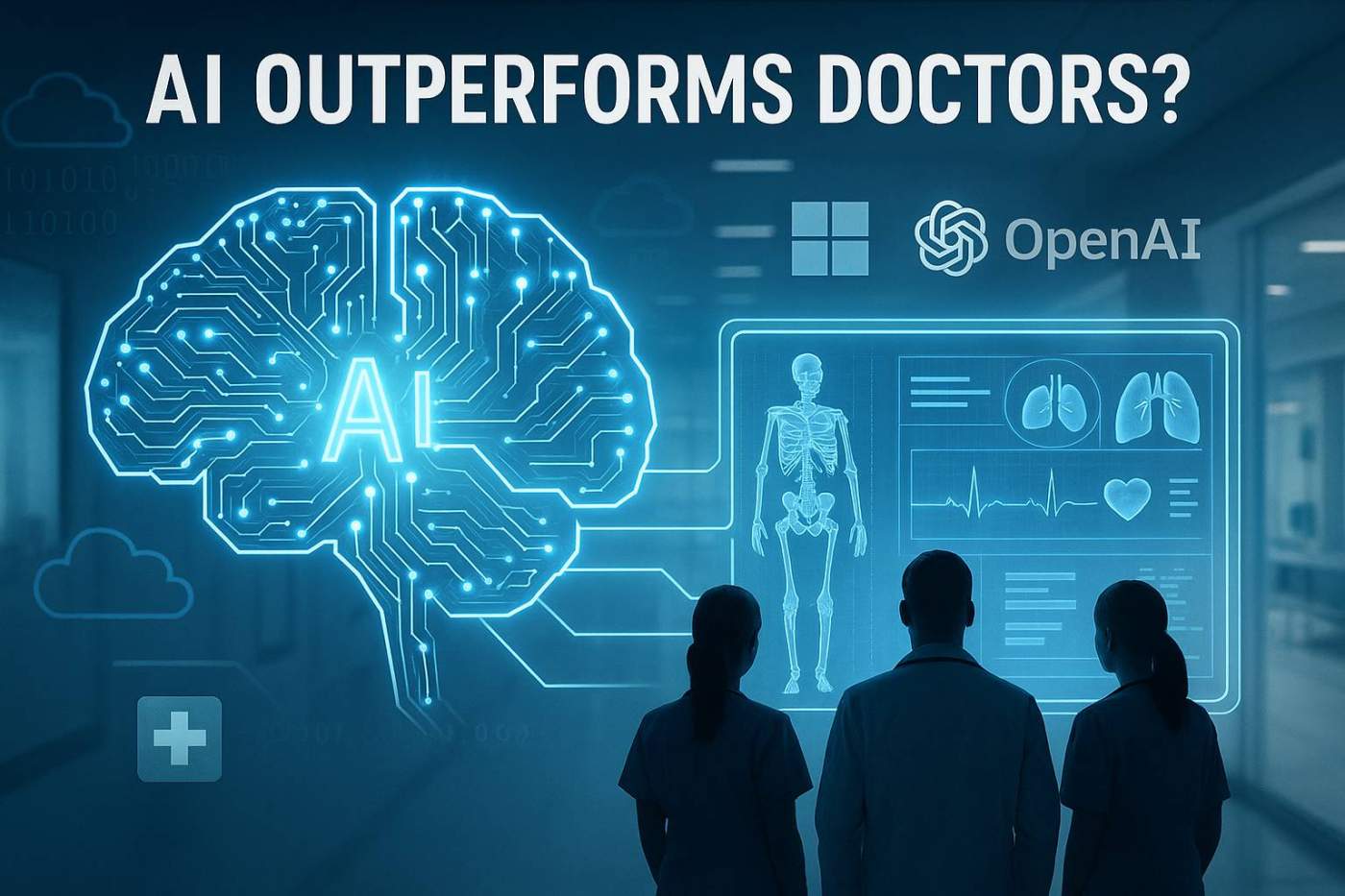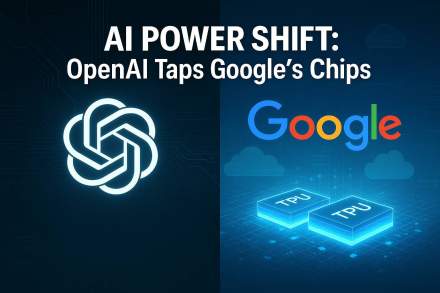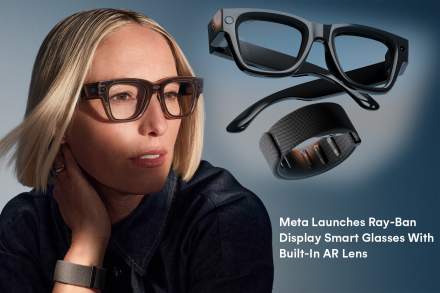In a landmark announcement, Microsoft has revealed that its AI system, when paired with OpenAI’s advanced o3 model, significantly outperforms human doctors in diagnosing complex medical cases. This breakthrough, described as a potential “path to medical superintelligence,” showcases how AI could transform the future of healthcare, not by replacing doctors, but by elevating diagnostic accuracy, efficiency, and accessibility.
This article explores Microsoft’s research, compares its implications from both Google Search and AI Search perspectives, and addresses the frequently asked questions surrounding the future of AI in medicine.
Microsoft’s Breakthrough: AI Diagnosing Better Than Doctors
The Research Setup
Microsoft’s AI team, headed by British tech entrepreneur Mustafa Suleyman, developed a system designed to simulate the expertise of a panel of seasoned physicians. It was tested using over 300 complex case studies from the New England Journal of Medicine (NEJM).
- AI Accuracy: 8/10 cases correctly diagnosed
- Human Doctors (Solo): 2/10 cases correctly diagnosed
The AI didn’t just regurgitate information. It performed clinical reasoning, ordered diagnostic tests, and asked relevant questions like a real physician.
Diagnostic Orchestrator: The AI Clinician
The system’s core is a “diagnostic orchestrator” — an agent-like AI that coordinates with foundational models (OpenAI, Meta, Anthropic, Google’s Gemini, etc.) to decide:
- What tests to order
- How to interpret results
- What diagnosis to give
Why It Matters: The Google Search vs AI Search Paradigm
From Google Search (Static Information Access)
Traditionally, patients or doctors use Google Search to:
- Look up symptoms
- Read health articles
- Find clinical guidelines or studies
Limitation: Google Search relies on static, keyword-matched content. It doesn’t reason, interpret lab results, or adapt in real time. At least for now, it’s the full potential OpenAI can extract from Google’s AI infrastructure.

To AI Search (Dynamic Diagnostic Reasoning)
AI Search in Microsoft’s system does what Google Search cannot:
- Interacts like a doctor: Asks follow-up questions, orders tests.
- Understands context: Factors in history, test results, and probabilities.
- Learns across disciplines: Not limited to a single specialty.
This shift from lookup-based search to interactive clinical reasoning represents a seismic shift in medical technology.
Will AI Replace Doctors? Not Yet.
Despite the success, Microsoft emphasized that AI is not a replacement for human doctors.
“Doctors build trust, manage uncertainty, and navigate human emotions — roles AI cannot replicate.”
The AI is seen as a clinical assistant, enhancing:
- Diagnosis of complex or rare conditions
- Triage efficiency
Patient education and self-care
The Road Ahead: Challenges & Opportunities
Microsoft’s Caveats:
- The system isn’t clinically ready for deployment.
- Requires peer review and further trials
- Needs validation for common symptoms and diverse populations
But the Potential Is Massive:
- Cost-effective care: Efficient use of tests
- Scalable expertise: AI can consult across medical specialties
Global access: Empower low-resource settings with diagnostic support
FAQ:
❓ Is this AI system available for clinical use?
No. Microsoft’s research is still undergoing peer review and further testing before it can be used in real healthcare environments
❓ How is this different from using Google to search symptoms?
Google provides information, while Microsoft’s AI provides clinical reasoning — it thinks and acts like a doctor, not a search engine.
❓ Can AI fully replace doctors in the future?
Unlikely. While AI may excel in diagnosis and data interpretation, doctors are essential for patient trust, communication, emotional care, and decision-making in complex or ambiguous cases.
❓ What role does OpenAI’s o3 model play?
OpenAI’s O3 model is one of the large language models driving the diagnostic reasoning capabilities. It’s capable of understanding medical language, logic, and context deeply.
❓ Could this reduce healthcare costs?
Yes. Microsoft notes the AI was more cost-efficient in ordering fewer but more relevant tests, potentially reducing diagnostic overhead.
❓ What is “medical superintelligence”?
It refers to AI that surpasses all human doctors in medical knowledge, reasoning, and decision-making capabilities across various specialties.
Final Thoughts
Microsoft’s unveiling of an AI system that outperforms doctors in complex diagnosis is not just another tech milestone — it’s a glimpse into a future where AI becomes a trusted co-pilot in medicine. While the term “medical superintelligence” may sound ambitious, the foundation is already being built.
As we transition from Google Search to AI-powered clinical decision-making, the future of healthcare is not just smart — it’s superintelligent.





https://shorturl.fm/EzogK
https://shorturl.fm/p4rjO
https://shorturl.fm/k2yXi
https://shorturl.fm/j8IIj
https://shorturl.fm/ftvDB
https://shorturl.fm/UQUpT
https://shorturl.fm/mv7HP
https://shorturl.fm/BcZBF
https://shorturl.fm/ynZlb
https://shorturl.fm/P8Kjl
https://shorturl.fm/mapcd
https://shorturl.fm/JZ8lX
https://shorturl.fm/XeUAU
https://shorturl.fm/rZyFu
https://shorturl.fm/0QbVx
https://shorturl.fm/7p8Y6
https://shorturl.fm/ZILzg
https://shorturl.fm/uWGL4
https://shorturl.fm/pgh2a
https://shorturl.fm/qldA3
https://shorturl.fm/4r8lL
https://shorturl.fm/CYDVr
https://shorturl.fm/5w9Ta
https://shorturl.fm/e8FWm
https://shorturl.fm/ecOVM
https://shorturl.fm/vZJ2v
https://shorturl.fm/PKHRL
https://shorturl.fm/JeEWF
https://shorturl.fm/4mamE
https://shorturl.fm/utvXr
https://shorturl.fm/h1MhC
https://shorturl.fm/EHIbu
https://shorturl.fm/bi0Ju